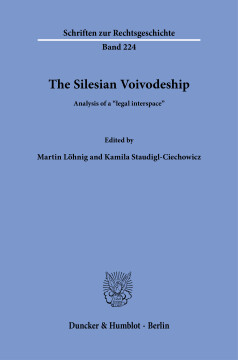Proposals for papers (max. 20 minutes) are invited on the subject of ‘Government Print in Early Modern Europe’ to be presented at the first COMLAWEU (Communicating the Law in Europe, 1500-1750) conference at St Andrews, to be held on 20 and 21 May 2025.
Abstracts (max. 300 words) and a short bio (max. 150) words are due to Dr Arthur der Weduwen, Principal Investigator of the COMLAWEU project, by 31 October 2024, at adw7@st-andrews.ac.uk.
Papers are invited on any aspect covered by the conference, which will seek to provide answers to some of the following questions:
- What was the impact of print on the codification and dissemination of law?
- How common was the publication of laws in printed form, and how did this change over time?
- How did secular authorities employ print to communicate with their subjects? To what extent did they seek to communicate with audiences outside their legal jurisdiction?
- How did the figure of the ‘privileged printer’ (royal, ducal, municipal, etc.) evolve, and how important was government print to the business of these artisans?
- What influence did printers exercise over the composition and appearance of placards, ordinances and declarations? How did typographical and visual standards of government print change over time?
- To what extent did copies of laws and other state publications circulate commercially? In what other forms were they republished or reprinted (such as in chronicles, periodicals and newspapers)?
It is expected that papers presented at the conference will also be published, by the end of 2026, in an edited volume.
Early modern European politics was inextricably tied to the invention of printing with moveable type in the middle of the fifteenth century. By 1500, secular authorities throughout Europe, from Augsburg and Bologna to Deventer and Valencia, had begun to publish statutes, laws and edicts in print for dissemination among their subjects.
Although publishing ordinances in print was common throughout Europe, the extent to which authorities committed their rulings to print varied greatly. In large cities such as Milan, Lyon and Cologne, the municipal authorities made use of print early in the sixteenth century, but they all did so irregularly, and only when exceptional circumstances demanded it. These interventions often concerned fluctuations in bread prices, outbreaks of plague, or announcements concerning markets. During the 1560s and 1570s, the magistrates of Lyon and Cologne both began to make more regular use of printed broadsheets and pamphlets, a direct result of the uncertainty unleashed by war, economic upheaval and religious tension. In contrast, very few municipal ordinances are known to have been printed in the British Isles or Scandinavia before the later seventeenth century, where virtually all edicts issued in print were published by the crown or Parliament. There were also regions in Europe, such as the Dutch Republic, where even small villages of several hundred inhabitants would have their local ordinances distributed in print.
By 1700, we know that at least 133,000 editions of ordinances and edicts had been published in Europe (as per the latest Universal Short Title Catalogue statistics), and by this date state publications were among the most common type of text to come off printing presses. This is all the more remarkable when we consider that the surviving exemplars of this genre are only a very small representative sample of the likely total production: placards affixed to walls and street corners had a poor chance to survive for posterity.
There is a growing body of work that points to the important role played by printed broadsheets and pamphlets in political conflicts and in fostering the growth of a politically-engaged public. Historians of the book and printing are also increasingly noting the importance of ‘ephemeral’ print, such as ordinances and edicts, in ensuring the long-term viability of printing and the book trade. Large publishing projects tied down capital and did not offer a rapid return on investment. Printing for the government, on the other hand, was a useful strategy to maintain a steady cash flow. Printers could complete a consignment of placards in one or two days of work, deliver the entire batch to the chancellery, and be paid in cash. Although official broadsheets and pamphlets may be considered as a form of ‘ephemera’, work of this sort was respected by the professionals of the book trade. State publications were often produced with great care, and on high quality paper.
For printers, producing official edicts was ideal work, and the privilege of printing for the state was hotly contested. Being designated as a ‘royal printer’ or ‘printer to the city’ was desirable for the degree of status that such titles conferred, as well as for the payments that accompanied printing for government. In many European states, printers who had monopolies to produce proclamations and edicts were generally the wealthiest in the trade: in seventeenth-century The Hague, Machteld van Leuningen, printer to the States General and States of Holland, even became one of the richest citizens in the entire town. Her success was replicated elsewhere, as in Edinburgh, where Agnes Campbell dominated the Scottish print trade for over three decades thanks to her position as Royal Printer.
Printers such as Van Leuningen and Campbell also exploited their monopolies for the commercial sale of ordinances and edicts: an important and thus far underexplored segment of the market for state publications. What is becoming clear, however, is that in early modern Europe, there existed a mutually-supportive relationship between the print industry and government. To printers, the authorities represented the best sort of customer: a regular client who demanded few risks on the part of the industry. To the authorities, the printers had come to play a critical role in the smooth functioning of daily administration, and the maintenance of the delicate political bond between rulers and their inhabitants.




